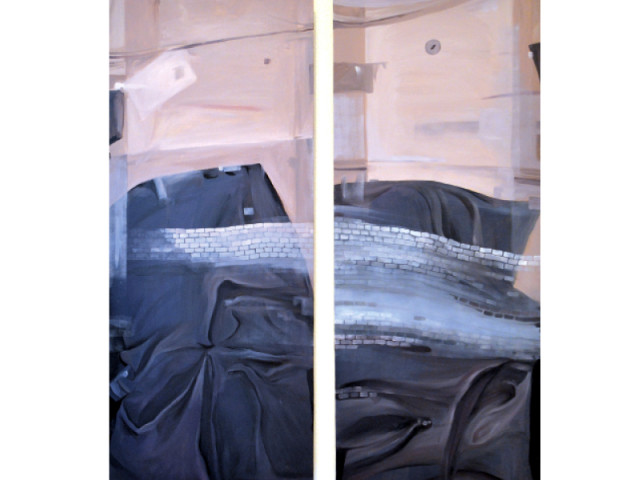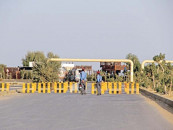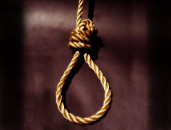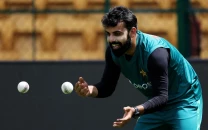Striking conversations: Art that speaks to the viewer
‘Not Everyone Talks’ exhibit held to mark Satrang Gallery’s one year anniversary.

Some of the pieces from the exhibit. PHOTO: THE EXPRESS TRIBUNE
Two swings hang from the ceiling next to the projection of a grainy, 16mm black and white film on a wall. The film shows scenes from central Chicago — aerial shots of cars passing a traffic signal and facades of high-rise apartment buildings — before the camera shifts to a set of empty swings in a playground.
At this precise moment, the two swings — one pistachio, the other pink with a tiny flower print — form an eerie union of past and present with the four swings in the mute film, a juxtaposition that invites conversation. Why are the swings empty? Where are the children who should be playing here?
The installed swings— more aptly “A recipe for disaster” by Sahyr Sayed — and the film — “The Great Divorce” by Shalalae Jamil — are two separate art pieces, but placed next to each other because they describe perfectly the ethos of the show, “Not Everyone Talks.”
Featuring 15 artists, the show was organised to celebrate the first anniversary of The Satrang Art Gallery in Islamabad on Friday.
Thirteen of the 15 artists were featured at the gallery during the past year, and their pieces were picked to fit the show’s theme of “conversations.”

Some of the pieces from the exhibit. PHOTO: THE EXPRESS TRIBUNE
“(This show) examines the conversations that are inspired by interactions with artworks, and which exist within artworks,” curator Zahra Khan said in a written statement. “These sometimes manufactured, but primarily spontaneous exchanges facilitate the forging of a relationship between an artist, artwork and the viewer.”
Artist Mamoona Riaz, a National College of the Arts graduate, said her work attempts to engage the viewer in a conversation.
Using mixed media, Riaz tried to depict the personal invasion of privacy through three square boxes which presented a layered image. Each box had a butterfly or houseflies trapped inside it, with the outermost layer showing a miniature floor plan of a house.
“I have a certain intended meaning for the artwork and the viewers have their own interpretation, so it begins a kind of a conversation between artist and viewer,” Riaz said.
Most people associate conversations with spoken word and Amin Guljee’s audio installation at the show ensured this association was not ignored.
Guljee’s “Char-Bagh”, a collaborative sound piece with actor and director Angeline Malik, is a one-word “lost-in-translation” dialogue which explores how conversations and languages help humans make meaning of the reality that surrounds them.
The dialogue starts with Guljee saying “Charbagh” and Malik replying “Garden” — a rather inaccurate and crude English translation of the Persian word for a garden’s layout. In a crescendo, the two artists repeat the words over and over; the dialogue starts to sound like a heated argument. But just at the climax, the two artists switch languages, repeating the same banter again.
This rapid reversal is perhaps the beginning of a new conversation about how urban Pakistanis often use multiple languages to convey meaning.
Attiya Shaukat’s “Let’s Play Politics” shows the body of a woman, which appears to be in the middle of an awkward fall, split and spliced over six consecutive frames from right to left. But the splicing is mismatched, giving the impression that the disruption the woman endured ended up changing her.
Artists whose works were exhibited at the show included Ali Asad Naqvi, Noor Ali Chagani, Mohsin Shafi and Maha Ahmed among others.
Published in The Express Tribune, April 6th, 2013.


















COMMENTS
Comments are moderated and generally will be posted if they are on-topic and not abusive.
For more information, please see our Comments FAQ